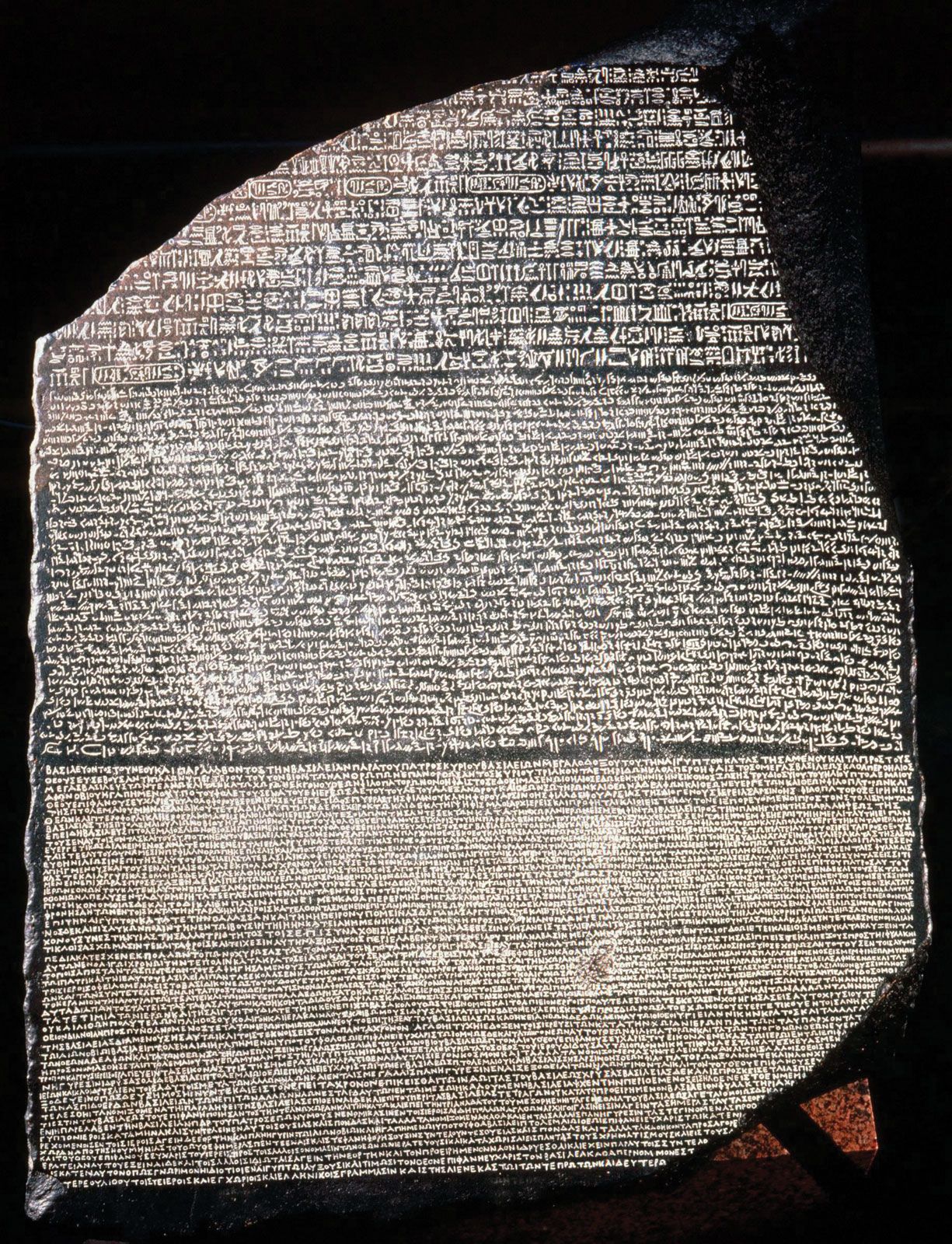In 1799, a group of French soldiers rebuilding a military fort in the port city of el-Rashid (or Rosetta), Egypt, accidentally uncovered what was to become one of the most famous artifacts in the world — the Rosetta Stone.

The ancient slab was carved in 196 BC, and bears a royal decree issued by priests on behalf of Ptolemy V, then ruler of the Ptolemaic Empire in Egypt. The decree was copied on to large stone slabs called stelae, which were put in every temple in Egypt.
It says that the priests of a temple in Memphis, Egypt~ supports the king.

But the stone’s message isn’t what makes it famous; it’s how that message is written. The decree on the Rosetta stone is inscribed in three scripts: ancient Egyptian hieroglyphs, Egyptian demotic script and ancient Greek.
In 1822, Egyptologist Jean-François Champollion deciphered the hieroglyphs on the stone, enabling future translations of other texts written in the ancient Egyptian language, and reviving the lost history and culture of ancient Egypt.
Since 1802, the Rosetta Stone has resided at the British Museum in London.
#archaeohistories






